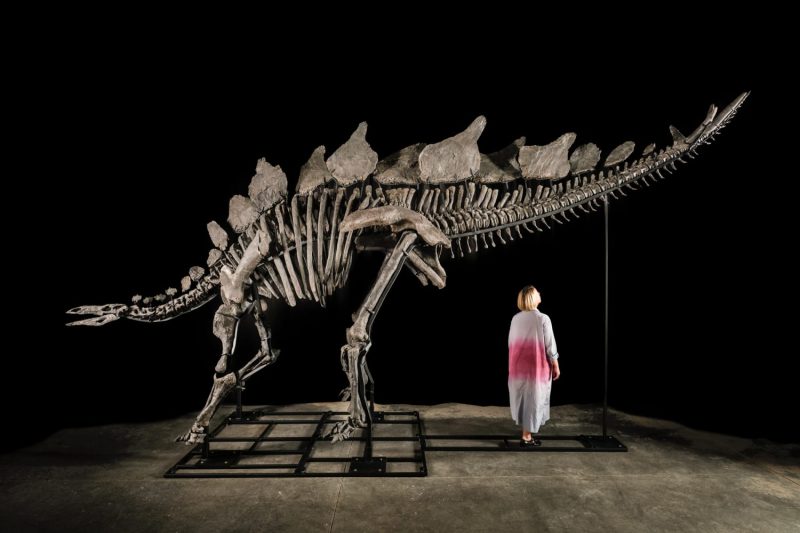Citadel’s Ken Griffin Buys a Stegosaurus for $45 Million in a Record Auction Sale
The recent record-breaking auction sale of a rare Stegosaurus skeleton to billionaire investor Ken Griffin has once again brought the spotlight on the intersection of paleontology and high finance. Griffin, the founder and CEO of Citadel, reportedly paid a staggering $45 million for the dinosaur fossil, setting a new benchmark in the market for such prehistoric artifacts.
The purchase of the Stegosaurus, a herbivorous dinosaur known for its distinctive row of large bony plates along its back, is not the first foray of wealthy individuals into the world of paleontological acquisitions. Over the years, private collectors, museums, and investors have engaged in bidding wars for rare and well-preserved dinosaur specimens, driving prices to unprecedented levels.
The fascination with dinosaur fossils among the ultra-wealthy can be attributed to several factors. For some, it is a display of wealth and status, a tangible symbol of power and privilege that sets them apart from the average collector. Owning a piece of natural history that dates back millions of years can elevate one’s prestige and reputation in certain circles.
Moreover, dinosaur fossils have proven to be lucrative investment assets, with prices appreciating significantly over time. As the supply of high-quality specimens dwindles and global demand for such artifacts increases, dinosaurs have become coveted commodities that offer potential returns for savvy buyers.
The acquisition of the Stegosaurus skeleton by Ken Griffin not only represents a substantial financial investment but also underscores the growing interest in paleontology as a profitable and rewarding pursuit. By leveraging his considerable resources and expertise, Griffin has not only secured a rare and valuable piece of Earth’s history but also contributed to the preservation and study of these ancient creatures.
While some critics may view the commercialization of dinosaur fossils with skepticism, arguing that they belong in public institutions for scientific research and educational purposes, the reality is that private collectors like Griffin play a crucial role in funding paleontological research and conservation efforts. By supporting museums, universities, and excavation projects, these individuals help advance our understanding of prehistoric life and ensure the preservation of valuable specimens for future generations.
In conclusion, the sale of the Stegosaurus skeleton to Ken Griffin for $45 million highlights the growing market for dinosaur fossils among wealthy collectors and investors. While the astronomical price tag may raise eyebrows, it reflects the intrinsic value placed on these ancient artifacts and the enduring allure of exploring Earth’s distant past. As the worlds of paleontology and high finance continue to intersect, the legacy of dinosaurs as enigmatic and captivating creatures lives on through the meticulous care and stewardship of individuals like Griffin.




























